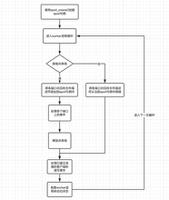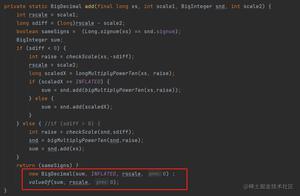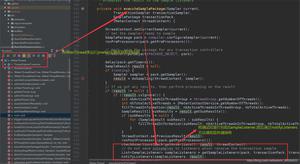Listener 监听器
本文内容纲要:Listener 监听器
Listener 监听器
前言:之前写了一篇关于Filter的文章:http://tianweili.github.io/blog/2015/01/26/java-filter/,现在再来一篇Listener的,Filter和Listener在项目中是经常用到的,巧妙的使用可以达到事半功倍的效果。故把两者的用法总结一下。
原文链接:http://tianweili.github.io/blog/2015/01/27/java-listener/
1、Listener的定义与作用
监听器Listener就是在application,session,request三个对象创建、销毁或者往其中添加修改删除属性时自动执行代码的功能组件。
Listener是Servlet的监听器,可以监听客户端的请求,服务端的操作等。
2、Listener的分类与使用
主要有以下三类:
1、ServletContext监听
ServletContextListener:用于对Servlet整个上下文进行监听(创建、销毁)。
public void contextInitialized(ServletContextEvent sce);//上下文初始化public void contextDestroyed(ServletContextEvent sce);//上下文销毁
public ServletContext getServletContext();//ServletContextEvent事件:取得一个ServletContext(application)对象
ServletContextAttributeListener:对Servlet上下文属性的监听(增删改属性)。
public void attributeAdded(ServletContextAttributeEvent scab);//增加属性public void attributeRemoved(ServletContextAttributeEvent scab);//属性删除
public void attributeRepalced(ServletContextAttributeEvent scab);//属性替换(第二次设置同一属性)
//ServletContextAttributeEvent事件:能取得设置属性的名称与内容
public String getName();//得到属性名称
public Object getValue();//取得属性的值
2、Session监听
Session属于http协议下的内容,接口位于javax.servlet.http.*包下。
HttpSessionListener接口:对Session的整体状态的监听。
public void sessionCreated(HttpSessionEvent se);//session创建public void sessionDestroyed(HttpSessionEvent se);//session销毁
//HttpSessionEvent事件:
public HttpSession getSession();//取得当前操作的session
HttpSessionAttributeListener接口:对session的属性监听。
public void attributeAdded(HttpSessionBindingEvent se);//增加属性public void attributeRemoved(HttpSessionBindingEvent se);//删除属性
public void attributeReplaced(HttpSessionBindingEvent se);//替换属性
//HttpSessionBindingEvent事件:
public String getName();//取得属性的名称
public Object getValue();//取得属性的值
public HttpSession getSession();//取得当前的session
session的销毁有两种情况:
1、session超时,web.xml配置:
<session-config> <session-timeout>120</session-timeout><!--session120分钟后超时销毁-->
</session-config>
2、手工使session失效
public void invalidate();//使session失效方法。session.invalidate();3、Request监听
ServletRequestListener:用于对Request请求进行监听(创建、销毁)。
public void requestInitialized(ServletRequestEvent sre);//request初始化public void requestDestroyed(ServletRequestEvent sre);//request销毁
//ServletRequestEvent事件:
public ServletRequest getServletRequest();//取得一个ServletRequest对象
public ServletContext getServletContext();//取得一个ServletContext(application)对象
ServletRequestAttributeListener:对Request属性的监听(增删改属性)。
public void attributeAdded(ServletRequestAttributeEvent srae);//增加属性public void attributeRemoved(ServletRequestAttributeEvent srae);//属性删除
public void attributeReplaced(ServletRequestAttributeEvent srae);//属性替换(第二次设置同一属性)
//ServletRequestAttributeEvent事件:能取得设置属性的名称与内容
public String getName();//得到属性名称
public Object getValue();//取得属性的值
4、在web.xml中配置
Listener配置信息必须在Filter和Servlet配置之前,Listener的初始化(ServletContentListener初始化)比Servlet和Filter都优先,而销毁比Servlet和Filter都慢。
<listener> <listener-class>com.listener.class</listener-class>
</listener>
3、Listener应用实例
1、利用HttpSessionListener统计最多在线用户人数
import java.text.DateFormat;import java.text.SimpleDateFormat;
import java.util.Date;
import javax.servlet.ServletContext;
import javax.servlet.http.HttpSessionEvent;
import javax.servlet.http.HttpSessionListener;
public class HttpSessionListenerImpl implements HttpSessionListener {
public void sessionCreated(HttpSessionEvent event) {
ServletContext app = event.getSession().getServletContext();
int count = Integer.parseInt(app.getAttribute("onLineCount").toString());
count++;
app.setAttribute("onLineCount", count);
int maxOnLineCount = Integer.parseInt(app.getAttribute("maxOnLineCount").toString());
if (count > maxOnLineCount) {
//记录最多人数是多少
app.setAttribute("maxOnLineCount", count);
DateFormat df = new SimpleDateFormat("yyyy-MM-dd HH:mm:ss");
//记录在那个时刻达到上限
app.setAttribute("date", df.format(new Date()));
}
}
//session注销、超时时候调用,停止tomcat不会调用
public void sessionDestroyed(HttpSessionEvent event) {
ServletContext app = event.getSession().getServletContext();
int count = Integer.parseInt(app.getAttribute("onLineCount").toString());
count--;
app.setAttribute("onLineCount", count);
}
}
2、Spring使用ContextLoaderListener加载ApplicationContext配置信息
ContextLoaderListener的作用就是启动Web容器时,自动装配ApplicationContext的配置信息。因为它实现了ServletContextListener这个接口,在web.xml配置这个监听器,启动容器时,就会默认执行它实现的方法。
ContextLoaderListener如何查找ApplicationContext.xml的配置位置以及配置多个xml:如果在web.xml中不写任何参数配置信息,默认的路径是"/WEB-INF/applicationContext.xml",在WEB-INF目录下创建的xml文件的名称必须是applicationContext.xml(在MyEclipse中把xml文件放置在src目录下)。如果是要自定义文件名可以在web.xml里加入contextConfigLocation这个context参数。
<context-param> <param-name>contextConfigLocation</param-name>
<param-value>classpath:spring/applicationContext-*.xml</param-value><!-- 采用的是通配符方式,查找WEB-INF/spring目录下xml文件。如有多个xml文件,以“,”分隔。 -->
</context-param>
<listener>
<listener-class>org.springframework.web.context.ContextLoaderListener</listener-class>
</listener>
3、Spring使用Log4jConfigListener配置Log4j日志
Spring使用Log4jConfigListener的好处:
动态的改变记录级别和策略,不需要重启Web应用。
把log文件定在 /WEB-INF/logs/ 而不需要写绝对路径。因为系统把web目录的路径压入一个叫webapp.root的系统变量。这样写log文件路径时不用写绝对路径了。
可以把log4j.properties和其他properties一起放在/WEB-INF/ ,而不是Class-Path。
设置log4jRefreshInterval时间,开一条watchdog线程每隔段时间扫描一下配置文件的变化。
webAppRootKey project.root log4jConfigLocation classpath:log4j.properties log4jRefreshInterval 60000 org.springframework.web.util.Log4jConfigListener
4、Spring使用IntrospectorCleanupListener清理缓存
这个监听器的作用是在web应用关闭时刷新JDK的JavaBeans的Introspector缓存,以确保Web应用程序的类加载器以及其加载的类正确的释放资源。
如果JavaBeans的Introspector已被用来分析应用程序类,系统级的Introspector缓存将持有这些类的一个硬引用。因此,这些类和Web应用程序的类加载器在Web应用程序关闭时将不会被垃圾收集器回收!而IntrospectorCleanupListener则会对其进行适当的清理,已使其能够被垃圾收集器回收。
唯一能够清理Introspector的方法是刷新整个Introspector缓存,没有其他办法来确切指定应用程序所引用的类。这将删除所有其他应用程序在服务器的缓存的Introspector结果。
在使用Spring内部的bean机制时,不需要使用此监听器,因为Spring自己的introspection results cache将会立即刷新被分析过的JavaBeans Introspector cache,而仅仅会在应用程序自己的ClassLoader里面持有一个cache。虽然Spring本身不产生泄漏,注意,即使在Spring框架的类本身驻留在一个“共同”类加载器(如系统的ClassLoader)的情况下,也仍然应该使用使用IntrospectorCleanupListener。在这种情况下,这个IntrospectorCleanupListener将会妥善清理Spring的introspection cache。
应用程序类,几乎不需要直接使用JavaBeans Introspector,所以,通常都不是Introspector resource造成内存泄露。相反,许多库和框架,不清理Introspector,例如: Struts和Quartz。
需要注意的是一个简单Introspector泄漏将会导致整个Web应用程序的类加载器不会被回收!这样做的结果,将会是在web应用程序关闭时,该应用程序所有的静态类资源(比如:单实例对象)都没有得到释放。而导致内存泄露的根本原因其实并不是这些未被回收的类!
注意:IntrospectorCleanupListener应该注册为web.xml中的第一个Listener,在任何其他Listener之前注册,比如在Spring's ContextLoaderListener注册之前,才能确保IntrospectorCleanupListener在Web应用的生命周期适当时机生效。
<!-- memory clean --><listener>
<listener-class>org.springframework.web.util.IntrospectorCleanupListener</listener-class>
</listener>
原文链接:http://tianweili.github.io/blog/2015/01/27/java-listener/
本文内容总结:Listener 监听器
原文链接:https://www.cnblogs.com/hellojava/archive/2012/12/26/2833840.html
以上是 Listener 监听器 的全部内容, 来源链接: utcz.com/z/296598.html







